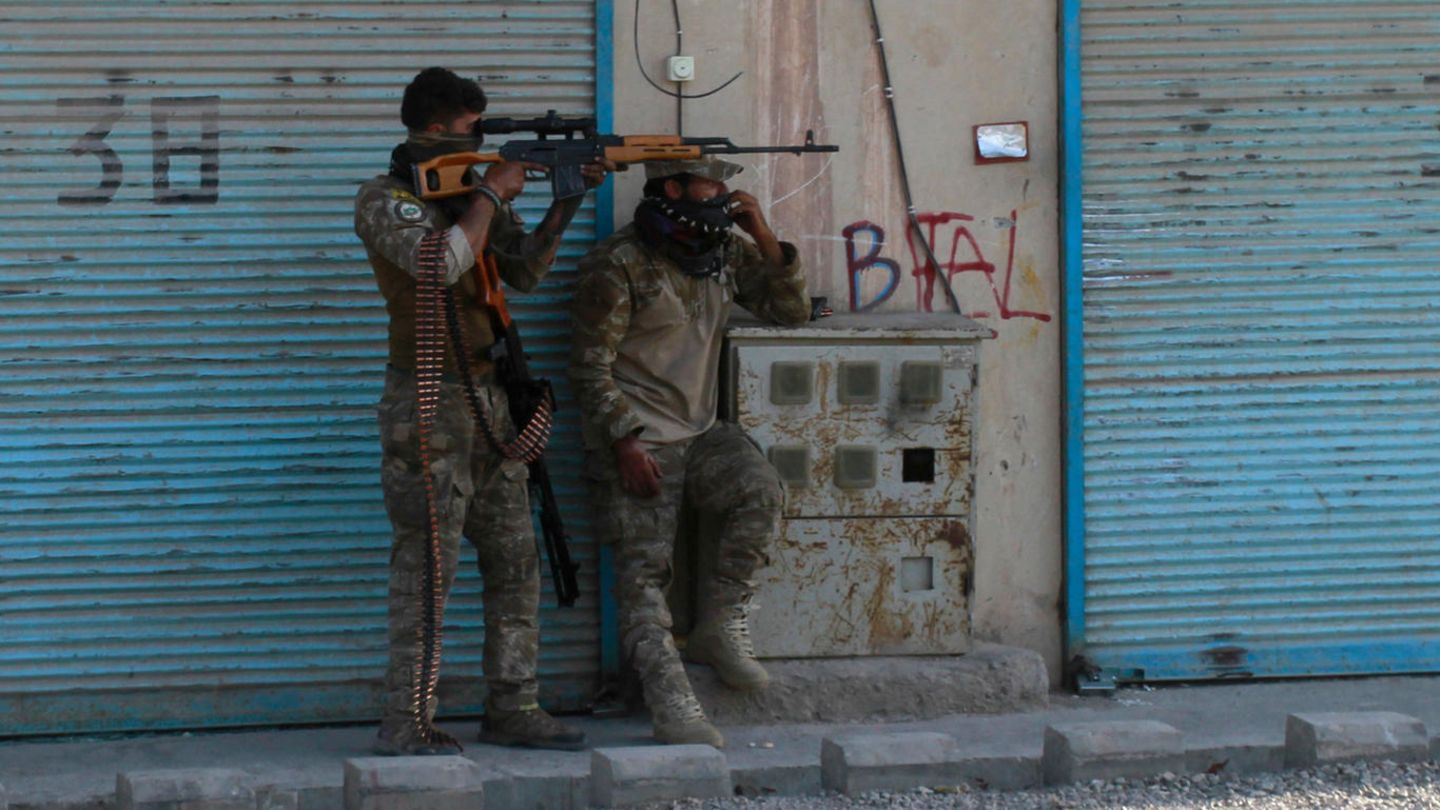The Taliban have achieved their greatest success to date – with Herat, they conquer the third largest city in Afghanistan. It was only on Thursday morning that they took the strategically important city of Gasni near Kabul. Your conquest could go further.
The third largest city in Afghanistan fell to the militant Islamist Taliban. The most important government institutions in Herat in the west of the country are in the hands of the Islamists, three local officials from the German Press Agency confirmed on Thursday. The strategic city of Gasni in the southeast fell only on Thursday morning (local time). The second largest city, Kandahar, is also fiercely contested.
The fall of the historic city of Herat with an estimated 600,000 inhabitants was preceded by weeks of attacks on the city. The Taliban were initially kept in check by the security forces and militias of the local politician and former warlord Ismail Chan, and in some cases were also pushed back.
Did the Afghan army just give up?
Provincial councils have reported increasing fighting in Herat since Thursday afternoon (local time). The Taliban had advanced into the city from the east and reached the governor’s seat up to 200 meters. Ismail Chan’s militia was said to have been busy repelling an attack by the Islamists in the west of the city. They have also advanced from the north, said another provincial council.
On Thursday evening (local time) the governor’s palace, the police headquarters and the prison were finally under the control of the Taliban. As in other cities they had conquered, the Islamists released the prisoners. The security forces did not fight, said the provincial councilor Ghulam Habib Haschimi.
Only the forces of the popular uprising recently assembled by Ismail Chan had resisted the takeover of the city, said Hashimi further. The governor and other officials had withdrawn to a military base near the airport. It was not immediately clear where Ismail Chan was, who, as one of the leaders of the Northern Alliance, had helped the US drive out the Taliban in 2001.
Selfies after short attacks
In the past few weeks, according to local officials, the Taliban had repeatedly invaded the city for short attacks and then withdrew immediately. With this and with selfies of themselves in the city on social media, they had spread terror among the citizens, said the spokesman for the governor of the province of Herat.
The strategic city of Gasni in the southeast of the country fell to the Taliban on Thursday morning (local time). On Thursday evening (local time) there were also reports that the country’s second largest city, Kandahar, could have been conquered by the Islamists. The telephone connections to the province did not work.
With the city of Herat, 11 of the 34 provincial capitals fell to the Islamists in less than a week. Most of it is in the north of the country. Gasni is the closest of all the fallen cities to Kabul.
Kabul will likely fall within 30 to 90 days
Since the start of the US and NATO troop withdrawal in early May, the Taliban have recorded massive territorial gains. From 1996 until the US-led intervention in 2001, the Islamists controlled large parts of Afghanistan. The withdrawal is now more than 95 percent complete. The German Bundeswehr and soldiers from other NATO countries have also already left Afghanistan.
In view of this rapid conquest, US intelligence services expect according to a media report that the capital Kabul could fall into the hands of the Islamists in 30 to 90 days, the Washington Post reported this week, citing unnamed sources in the US intelligence services.
US President Joe Biden defended the withdrawal of the US military on Tuesday. The Afghans must now “fight for their own state,” he said in the White House in Washington.
David William is a talented author who has made a name for himself in the world of writing. He is a professional author who writes on a wide range of topics, from general interest to opinion news. David is currently working as a writer at 24 hours worlds where he brings his unique perspective and in-depth research to his articles, making them both informative and engaging.




